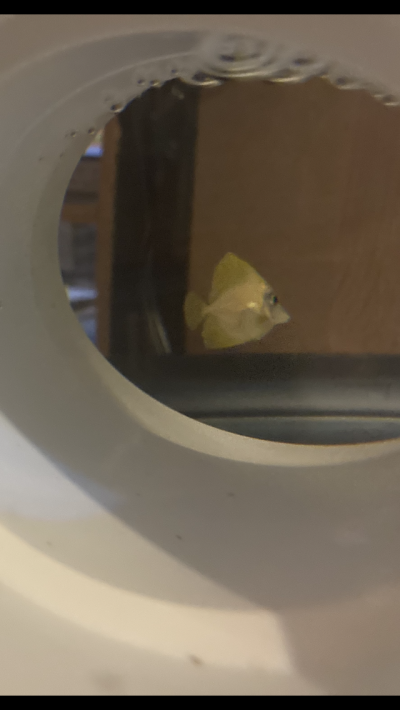I bought one august fro AB and indeed it was small translucent but healthy and eating like a pig from the get goI have no affiliation with @Biota_Marine, but with the recent stop of exports by Hawaii, and the large volume of people that have or would like a Yellow Tang in their aquarium, I figured I would share an experience of the Biota Yellow Tang I just received. Initially I attempted to find some reviews of their livestock, however the only thing I could find was posts from multiple years ago and marketing or trade show type articles.
You can purchase these specimens either directly from Biota, your LFS, multiple online sellers, or in my case, I purchased from @AlgaeBarn. Prior to purchasing, I reached out directly to Biota inquiring about what little information I found about the quality of these specimens other than their early releases from a few years ago which a number of them had erosion issues. To my surprise, they responded extremely fast and assured me that those issues have since passed as their processes have evolved.
I placed my order, it was delivered via Fedex directly from the Biota facility in Fort Lauderdale. The styrofoam container is of high quality, the fish was double bagged and included two heat packs as it was sent to me here in the frozen tundra of North Dakota. The fish was quite active prior to acclimating which was a good sign as usual and after floating the bag, opening and adding/replacing liquid from the bag, the fish was released within about an hour into my QT system. The fish was shipped in a roughly 1.020 salinity water so the acclimation process took a little longer than I normally like.
The fish is roughly the size of a 50cent piece, maybe a little smaller, and is still fairly translucent with its yellow colors starting to show. The fish is actively exploring the tank along with a small Tomini and Royal Gramma that are also starting their stay in QT. First feeding with Rods frozen and the fish actively fed after only being placed in QT a few hrs prior.

Was eventually added to the display tank and promptly took off after a much larger tang who only defended itself to the point that the yellow was removed and now the ruler of a 40 cube until it out grows it
it recovered from its battle scars amazingly well and expect to have it at least as long as it takes for the Hawaiian authorities to come to their senses
now how about a captive bred Potters...


















